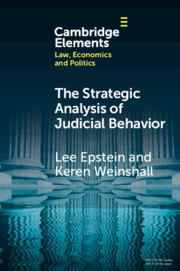Element contents
The Strategic Analysis of Judicial Behavior
Published online by Cambridge University Press: 21 May 2021
Summary
Keywords
- Type
- Element
- Information
- Online ISBN: 9781009049030Publisher: Cambridge University PressPrint publication: 17 June 2021

